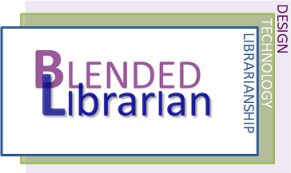“This fourth report proposes ten innovations that are already in currency and are having an increasing effect on education.”
That’s how the Innovating Pedagogy 2015 report starts off. This is a report worth taking a look at if you are interested in exploring some new approaches to teaching – or at least some new methods being tested. Here are the ten innovations:
Crossover learning Learning in informal settings, such as museums and after-school clubs, can link educational content with issues that matter to learners in their lives.
Learning through argumentation Students can advance their understanding of science and mathematics by arguing in ways similar to professional scientists and mathematicians.
Incidental learning Incidental learning is unplanned or unintentional learning. It may occur while carrying out an activity that is seemingly unrelated to what is learned.
Context-based learning Context enables us to learn from experience. By interpreting new information in the context of where and when it occurs and relating it to what we already know, we come to understand its relevance and meaning.
Computational thinking Computational thinking is a powerful approach to thinking and problem solving. It involves breaking large problems down into smaller ones.
Learning by doing science with remote labs Engaging with authentic scientific tools and practices such as controlling remote laboratory experiments or telescopes can build science inquiry skills, improve conceptual understanding, and increase motivation.
Embodied learning Embodied learning involves self-awareness of the body interacting with a real or simulated world to support the learning process.
Adaptive teaching All learners are different. However, most educational presentations and materials are the same for all. Adaptive teaching offers a solution to this problem. It uses data about a learner’s previous and current learning to create a personalised path through educational content.
Analytics of emotions Automated methods of eye tracking and facial recognition can analyse how students learn, then respond differently to their emotional and cognitive states.
Stealth assessment The automatic data collection that goes on in the background when students work with rich digital environments can be applied to unobtrusive, ‘stealth’, assessment of their learning processes.
These are all new to me, or I’ve not heard them described this way, excepting adaptive teaching. Some of these methods could have less appeal for a librarian-educator, but as we seek to find new ways to help students achieve deeper learning for effective research there may be some possibilities for applying new techniques. In addition, the context in which these methods would work best is perhaps not compatible with the short-term instruction primarily delivered by librarians. But there might be ways to integrate some of these new pedagogies into our practice.
Learning through argumentation, for example, may help students achieve deeper learning by requiring them to justify and argue for their reasons for making certain decisions about the selection and evaluation of information resources. Students might be asked to identify and then use terms for a search. To help them determine if the selected terms were effective students would need to argue in support of the outcome. Other students could be invited to argue for or against the terms. Can students handle providing evidence to support decisions that may not be easily understood? That’s part of the challenge. Stealth assessment sounds interesting as well, but given the technology requirements it’s timeline is considerably longer. It might be 4 or 5 years off in the future.
While blended librarians may lack formal learning in pedagogy and andragogy, many are savvy about learning theory, how it is applied in the classroom and how and when to use instructional technology to support their learning methods. This new report should get us thinking about new pedagogies and how we might apply them in our practice – or engage in discussions about them with faculty and other academic support colleagues.
